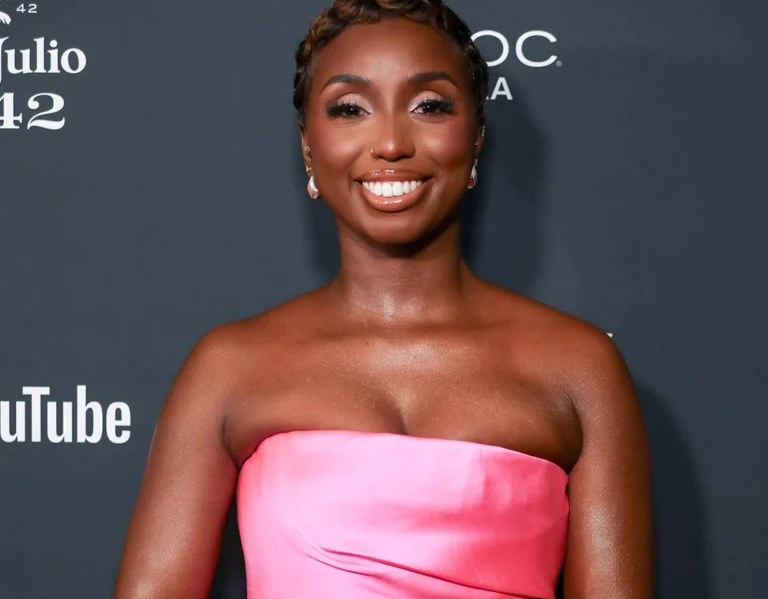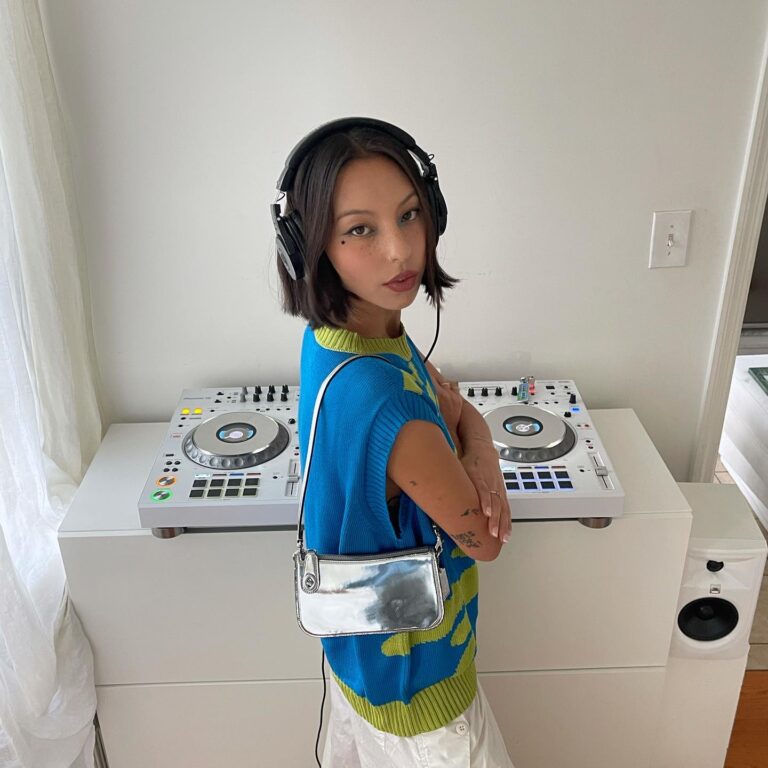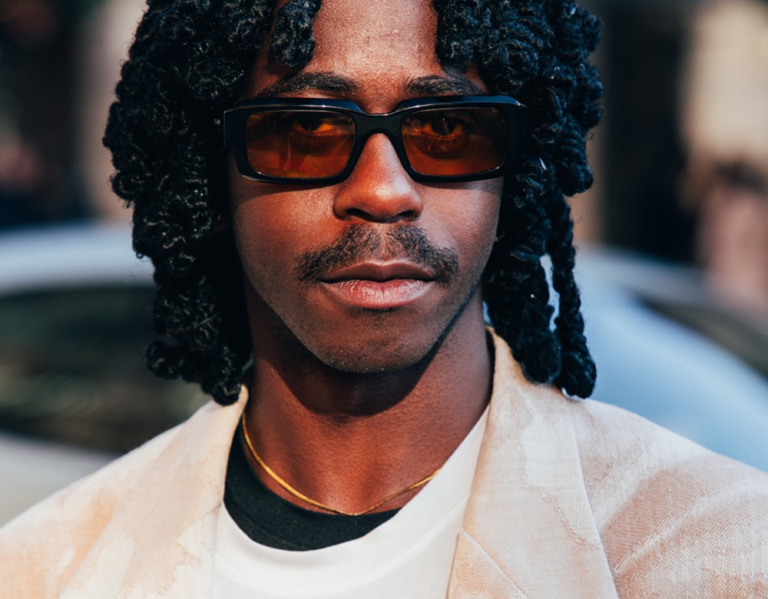Jazz Grant, Visual Artist, Margate/London
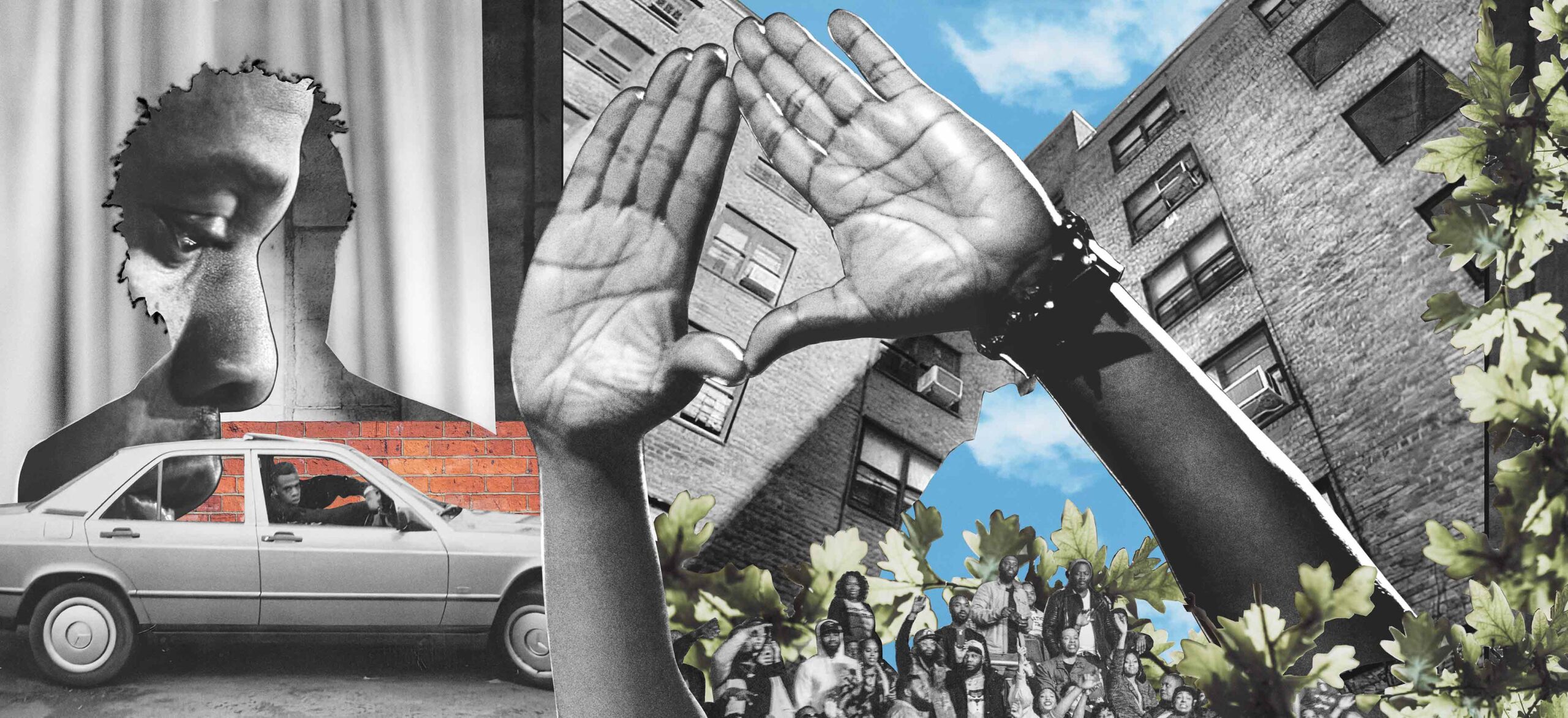
Hi Jazz, can you introduce yourself and tell us what you do?
I’m Jazz Grant. I’m a visual artist and I work mostly with collage techniques, mixed media processes and stop motion animation. I’m based in Margate now, but was born in London and grew up in Brighton. I’m 31 years old and of Jamaican and British heritage.
What does a typical day look like for you?
I either work on my personal art practice or I get commissioned to create pieces for brands and musicians and things like that. So my days actually vary quite dramatically, depending on where I’m at or what I’m working on. At the moment I’ve been working on my solo show. That involves building up textures, researching imagery or photocopying from books. I’m also experimenting with collaging on wooden boards and creating a short 1-2 minute animation. I’m looking to weave my ancestry together in the hope of portraying a sense of a journey.
And what differs, depending on whether it’s a personal project or a commissioned piece of work?
The main difference is the imagery. For commissioned work, that will be more defined by the client. I still need to utilise the imagery that works for me and my processes, going on intuition, but there’s just more specificity about what needs to be said. I don’t know why or what is going to draw my attention, it’s about investigating where they might have a relationship, and then something might grow from that organically.
Did you always want to be a collage artist?
No, I wasn’t even aware of what a collage artist was! I wanted to be a fashion designer. Growing up, I was surrounded by art in quite a casual way. It wasn’t precious but rather fun, like my mum recorded me practising the piano for one of her art installations – she was doing an MA in Brighton at the time – and my dad was a writer. The thought of doing something creative was always prevalent in me, intentionally choosing to practise arty subjects at school. I got a sewing machine at Christmas and I thought I was going to be a fashion designer. However, I was more drawn to texture and form rather than the methodological nature of pattern cutting or drawing designs, and this ultimately led me to collage.
"collage became my way to convey what I couldn’t draw"

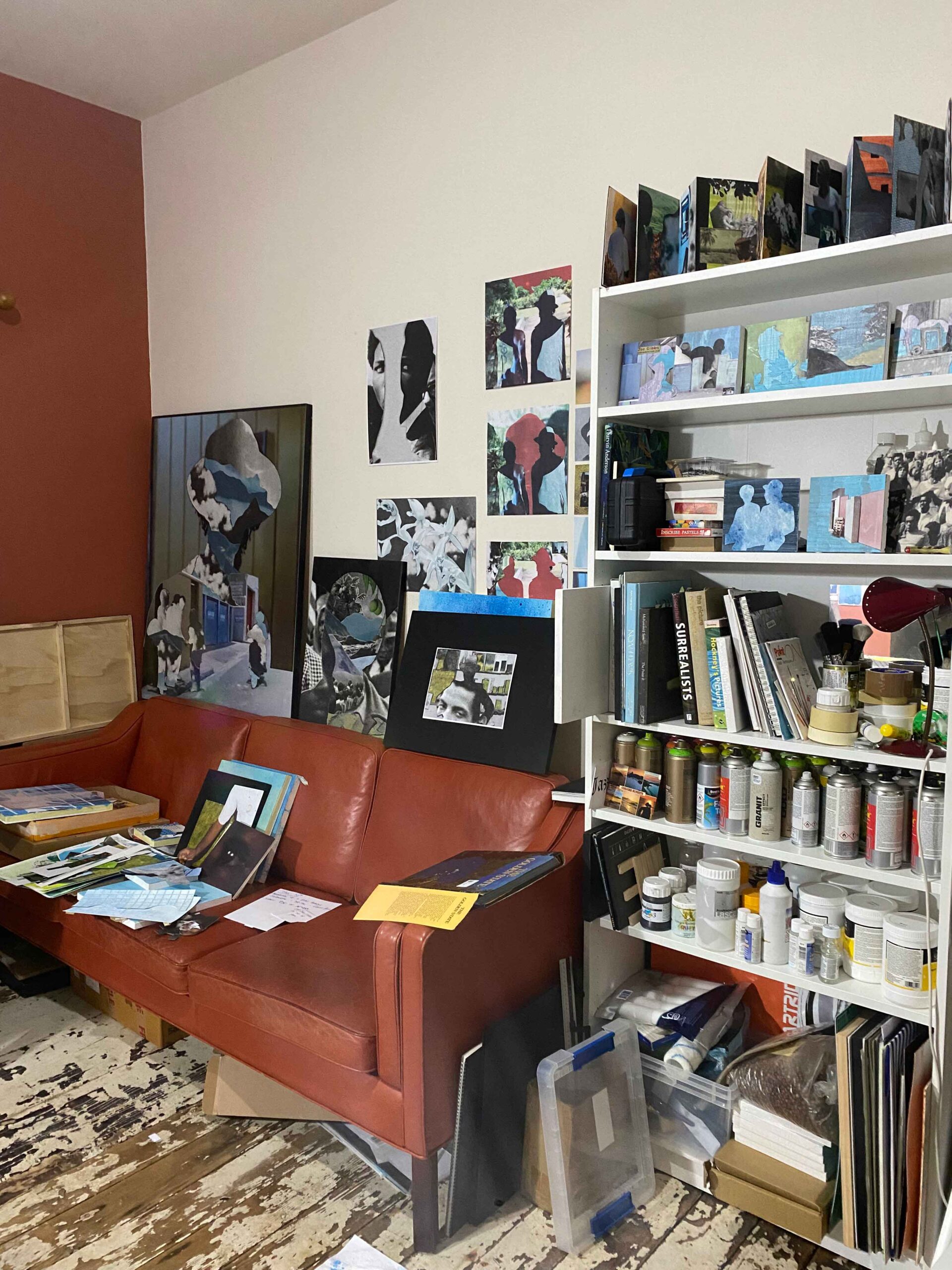

Can you elaborate on the journey that “led you to collage”?
I studied womenswear at Ravensbourne but nothing was clicking. I kept thinking this isn’t it, and in my second year I actually transferred to LCF to study Menswear. Because I dropped out and started again, I was in university for fashion for five years instead of three. Even with a clean state I was still struggling with something. I was so tough on myself with having a set of prescribed notions of what a fashion designer was. I wasn’t able to draw my designs and it was a core insecurity, so collage became my way to convey what I couldn’t draw. I couldn’t tap into linear drawings, they didn’t excite me, so instead I’d collage from my moodboard and use different pieces of garments to create the look. So, university was a landmark in my trajectory despite me not realising it at the time.
You work with a lot of fashion brands now. What was your experience like breaking into the industry, from a different entry point?
I can’t help but find it kind of surreal that I’m working with these huge brands now making collages, but I’m just drawn to things directly linked to fashion. Given that collaging is super accessible – you only need your eye and basic equipment like a printer-scanner, paper and scalpel – I think it’s so cool that it is starting to be incorporated into branding. But even before I truly turned to collaging, I was still set on designing for fashion.
I began interning for Grace Wales Bonner as she was the year above me at St Martins, and it was just after she’d graduated. We worked in a tiny studio off Mare Street. That was really influential for me, but I couldn’t find a pathway after I graduated to allow me to do what she did. I ended up freelancing and working multiple jobs to enable me to survive, but throughout it all I was making collages because I enjoyed them and others liked them. I would post them on my Instagram, viewing them as part of my creative process towards being a fashion designer. Then a friend asked me to exhibit them in her shop in Brighton and that was the first time I realised these could be more than an accompanying element. It was a turning point to see them as artwork. In the same month Bianca Saunders, one of my contemporaries, asked me to include some collages in a show she’d curated. I created a body of work specifically relating to the idea of a room. It all started from that. Then Boy.Brother.Friend asked me to exhibit my work editorially and slowly these stepping stones came together to show me that what I considered casual art could become more than that.
"slowly these stepping stones came together to show me that what I considered casual art could become more than that."

Was this pre-pandemic?
Yes. Actually, during the pandemic, my flatmate who was a director pitched on a FIFA commercial and incorporated my collages as stop motion into his idea. He won and suddenly I had a life changing option to make money and turn a hobby into a commercially viable outlet. Given that no in-person shooting could happen, we ended up making quite a few adverts in this stop motion format, which got me out of debt. But, in all honesty, that was quite a big jump and it was hard to keep track of how to budget when you go from being skint for so long to having injections of large amounts of money. Definitely a learning curve. After that, it’s always been the goal to balance commercial work with personal work.
How was it, going through this seismic, rapid career shift?
This was during the backdrop of Black Lives Matter, when black artists were being actively sought out. I went from fantasising about being included in the fashion world to having my work on the cover of Dazed. I was so fortunate and grateful but the sudden change was overwhelming and I know a lot of black artists that felt the same. Ultimately, I think because my parents understood what it was like to be a creative person, that allowed me to have a household that understood me. It’s something I think about often and know the value of. We weren’t flushed for cash but my dad knew how to keep the arts at the forefront of our lives whilst being savvy.
How has working on larger commissions influenced your craft and trusting your intuition on projects?
The first big brand I worked with was Burberry. I made a huge mural and it was amazing but terrifying. During my first commission in 2020 I was in pieces; I didn’t understand what they were asking me. I wanted to say yes but I was so scared that I wasn’t going to be able to do whatever it is that they thought I could do. Before that I was just making collages for myself, and so I used to get really stressed. Now I trust it’s going to work and if it doesn’t fall into place, it’s not the end of the road either, instead there’s a conversation to be had. Ultimately there are no real shortcuts and you have to be patient with yourself on each project, but don’t underestimate the power of giving yourself space to allow a moment where it all clicks, rather than refusing to stop trying until it does.
"there are no real shortcuts and you have to be patient with yourself on each project"

What excites you the most about your craft?
I get so much joy from the play aspect of collage – the freedom, the joy and the childlike nature of it. I usually print everything off and just start chopping things up, using a scalpel and starting to Blu-Tack all kinds of combinations together, then photocopying and scanning in these arrangements until I land on something that feels right. The speed is also a crucial element because I’m impatient and I get to try a lot of things out quickly and nothing is precious. I dislike art being too precious. I figured out how to love the thought of my art being finite. And what I think excites people about college and why I’ve been hit up for projects is that pretty much anyones creative field could be interpreted into a collage. It opens the door to collaboration with almost anyone, if they like my style. I’ve worked with people from football to fashion to music… There’s really something about this visual language that people feel. It might be that it can add a layer to what they’re trying to say already, to deepen or elevate it, so as to create and expand your message within these very restricted boundaries of the frame. I think it’s a jumping point for people who want to have something more than just an image in such a saturated digital world.
What do you find the most challenging?
There’s a lot of things. I have a lot of insecurities and doubts, as well as guilt, that can manifest. I think it’s the solo practice of the medium that means your inner thoughts can run wild. Especially guilt about the privilege of being able to make art all day for a living when others don’t get that luxury. There’s the pressures you put on yourself and then the expectations from others, when you are working on a commission. You have to remind yourself that this job isn’t that serious to avoid getting negativity stuck in a loop.
Lastly, do you have any advice to share with others who’d like to become a collage artist or enter a similar creative field?
The moment of clarity for me was when I stopped forcing myself to fit a mould of what I thought I wanted to be. So in this case, a fashion designer. The thought of trying to be something specific can hinder you. Absorb yourself in the doing, the practice, and letting it unfold. Also short courses, I’m obsessed with these as a way to be open to new forms of creativity to find out what works for you. It allows you to evolve and move into new spaces, that’s the experience I had. Also, collaging came easily and naturally to me and that made me doubt it’s worth. I thought it had to be hard in order for it to be something worth doing. If it feels good then follow it. There’s something to explore in that.
"Absorb yourself in the doing, the practice, and letting it unfold."
Hero Image: Book of Hov Mural
Image 01: Jazz in studio by Christian Cassiel
Image 02: Studio
Image 03: How Many Miles to Babylon
Image 04: Wales Bonner Adidas
Image 05: Process of Burberry
LATEST THAT MAY INTEREST YOU


